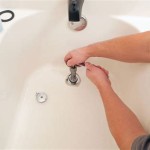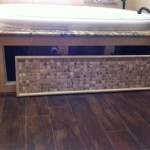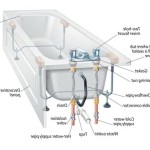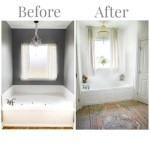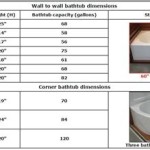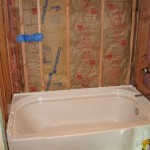Dimensions Of Standard Bathtub Size In Cm
Bathtubs are a common fixture in many bathrooms, offering a space for relaxation and hygiene. Understanding the dimensions of standard bathtubs is crucial for homeowners and contractors alike when planning bathroom renovations or new construction. The dimensions influence not only the bathing experience but also the efficient utilization of bathroom space. This article provides an overview of standard bathtub dimensions in centimeters, exploring various types and their typical sizes.
The standard bathtub dimensions are determined by a variety of factors. These factors include the practicality of fitting within common bathroom layouts, ensuring user comfort during bathing, and adhering to building codes and regulations. The dimensions are typically expressed as length, width, and depth. While there are variations based on style and manufacturing, understanding the most common dimensions provides a foundational understanding for planning and design purposes.
Standard Bathtub Lengths in Centimeters
The length of a bathtub is the most prominent measurement, influencing the overall suitability for the individual using the tub and the available space in the bathroom. Standard bathtub lengths traditionally range from approximately 152 centimeters to 183 centimeters. However, smaller tubs are available, as are considerably longer, soaking-style units.
A bathtub measuring 152 centimeters (approximately 60 inches) is often considered a standard length appropriate for smaller bathrooms or for individuals who prioritize space efficiency. This length may be suitable for showering and bathing but may not provide the extensive legroom desired by taller individuals.
A common intermediate length for bathtubs is 167 centimeters (approximately 66 inches). This length provides a compromise between space conservation and user comfort, offering more legroom than the 152-centimeter option without occupying significantly more floor space. It is often considered a versatile option suitable for a range of bathroom sizes.
At the upper end of standard bathtub lengths, a measurement of 183 centimeters (approximately 72 inches) is frequently encountered. Bathtubs of this length are better suited for larger bathrooms and individuals seeking a more spacious bathing experience. These longer tubs allow for greater immersion and comfort for taller individuals.
Beyond these standard lengths, there are specialty bathtubs that extend beyond the 183-centimeter mark. These are often referred to as soaking tubs or extra-long tubs and can reach lengths of 213 centimeters (approximately 84 inches) or more. These are designed for deep soaking and require more substantial bathroom space.
Standard Bathtub Widths in Centimeters
The width of a bathtub, measured from side to side, plays a significant role in comfort and bathing ergonomics. Standard bathtub widths typically range from approximately 71 centimeters to 76 centimeters.
A bathtub width of 71 centimeters (approximately 28 inches) is toward the narrower end of the standard range. This width may be suitable for smaller bathrooms or for situations where maximizing floor space is a priority. However, it may offer limited space for movement and comfort during bathing, particularly for larger individuals.
A more common and generally preferred width is 76 centimeters (approximately 30 inches). This provides a slight increase in bathing space compared to the 71-centimeter option, offering improved comfort and movement without significantly increasing the bathtub's footprint. This width represents a balance between space efficiency and user experience.
Wider bathtubs are also available, often associated with specialty designs such as whirlpool tubs or soaking tubs. These can exceed 76 centimeters in width, providing a more luxurious and spacious bathing experience. For example, some whirlpool tubs may reach widths of 81 centimeters (approximately 32 inches) or more to accommodate the integrated jets and provide increased comfort.
When selecting a bathtub width, it is important to consider the user's body size and the available space in the bathroom. A wider tub may provide increased comfort but could also make the bathroom feel cramped if the space is limited. Careful consideration of these factors is essential for achieving optimal bathing ergonomics and space utilization.
Standard Bathtub Depths in Centimeters
The depth of a bathtub, measured from the top edge to the bottom of the interior basin, is a critical factor affecting the level of immersion during bathing. Standard bathtub depths typically range from approximately 35 centimeters to 51 centimeters.
A bathtub with a depth of 35 centimeters (approximately 14 inches) is generally considered a shallower option. This depth may be suitable for individuals with mobility limitations or for situations where water conservation is a priority. However, it provides a less immersive bathing experience compared to deeper tubs.
A more common and generally preferred depth is 41 to 46 centimeters (approximately 16 to 18 inches). This provides a good balance between allowing for sufficient immersion and maintaining ease of entry and exit. This depth is often considered comfortable for a wide range of users and offers a more satisfying bathing experience.
Deeper bathtubs, reaching depths of 51 centimeters (approximately 20 inches) or more, are often associated with soaking tubs or Japanese-style tubs. These are designed for deep immersion and provide a more luxurious bathing experience. However, deeper tubs may require more effort to enter and exit and may not be suitable for individuals with mobility challenges.
The depth of the bathtub also influences the amount of water required to fill it. Deeper tubs naturally require more water, which can impact water consumption and energy costs for heating the water. Considerations regarding water usage should be taken into account when selecting a bathtub depth.
In summary, bathtub dimensions are critical considerations in bathroom design and renovation. Length, width, and depth all contribute to the overall bathing experience and space requirements. Careful consideration of these factors, along with individual needs and bathroom constraints, leads to a more effective and satisfying bathtub selection and installation.

Perfect Fit Standard Acrylic Bathtubs Transforming Bathrooms 160cm 150cm Sizes Etihadsouq Ae

Acrylic Free Standing Back To Wall Bathtub Model Nola White 160x75x57 Cm

1500x730x510mm Bathtub Right Corner Back To Wall Acrylic Gloss White Freestanding Bath Tub Bsd

Badewanne Pinel Silber Ch

What Is The Standard Size Of A Bathtub

Concerto Ideal Standard International Egypt

Low Edge Ridge Profile Bathtub 170 X 70 Cm Square Entry
Objektet Bim Shkarkim Falas I Life Rectangular Bath Tub 150x70 Cm Bimobject

Free Standing Bathtub Helgenæs Dimension L 175 X W 80 H 60 Cm

Salma Acrylic Bathtub Size 175x75 Cm Etihadsouq Ae
Related Posts

